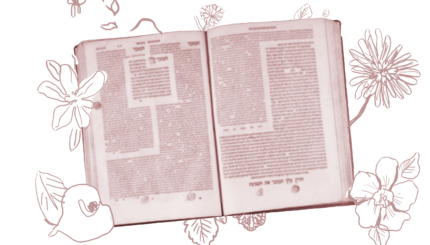One of the consistent themes of Tractate Eruvin is land ownership. The rabbis spent much time debating what makes a particular area public or private or of that intermediate status, the karmelit. On today’s daf, the rabbis wind up in a short digression about a specific situation of land ownership: What happens to land owned by a convert who dies without heirs?
In general, the rights of a Jew by choice are indistinguishable from those of a born Jew, and in fact it is considered a sin to treat converts differently from other Jews. But the family members of a convert have a different status in Jewish law. Normally, if a Jewish person dies, their property transfers to their next of kin. But Jewish estate law treats the relatives of converts differently. If the convert did not transfer their property to their relatives while they were alive, the property becomes ownerless after they die and essentially up for grabs. Anyone can come and claim it.
One of the ways ownerless property is claimed in Judaism is by constructing an eruv around it, which is how we come to be discussing this matter in Tractate Eruvin. But another way is by performing an act of improvement upon it. And here we come to an interesting teaching:
Yirmeya Bira’a said that Rav Yehuda said: If one sowed turnip seeds in cracks which he found in land that had belonged to a convert, and another Jew came and plowed the ground a little, the latter one, the one who plowed, acquires the property, and the first one does not acquire it.
According to Rav Yehuda, sowing turnips is insufficient to claim a land rendered ownerless by a deceased convert. Someone can come along later and plow the land and claim it as their own. What is the reason for this? The Gemara explains:

Help us keep Jewish knowledge accessible to millions of people around the world.
Your donation to My Jewish Learning fuels endless journeys of Jewish discovery. With your help, My Jewish Learning can continue to provide nonstop opportunities for learning, connection and growth.
At the time that he sowed, the land was not improved by his sowing. When it did improve, with the growth of the turnips, it improved on its own.
One of the ways that land is improved is by sowing crops on it. But this kind of improvement is indirect — the crop makes the improvement over time as it matures. According to Rav Yehuda, for an improvement to be effective as a means of land acquisition, you must make a direct improvement on the land, like plowing. Just sowing some seeds that might eventually lead to an improvement isn’t enough.
As we saw earlier in Eruvin, the rabbis disagree about whether the function of an eruv is as a symbolic boundary or merely serves as a reminder. Here we see the act of land improvement doing a bit of both. Cultivating the earth is arguably the most elemental symbol of ownership we have. But it’s also a visible sign, a reminder for all the world to see. Even from the window of an airliner, it’s immediately apparent which lands are being stewarded and which aren’t. Which may be part of the reason why dropping a few turnip seeds in the earth doesn’t quite cut it.
Read all of Eruvin 25 on Sefaria.
This piece originally appeared in a My Jewish Learning Daf Yomi email newsletter sent on September 3, 2020. If you are interested in receiving the newsletter, sign up here.



